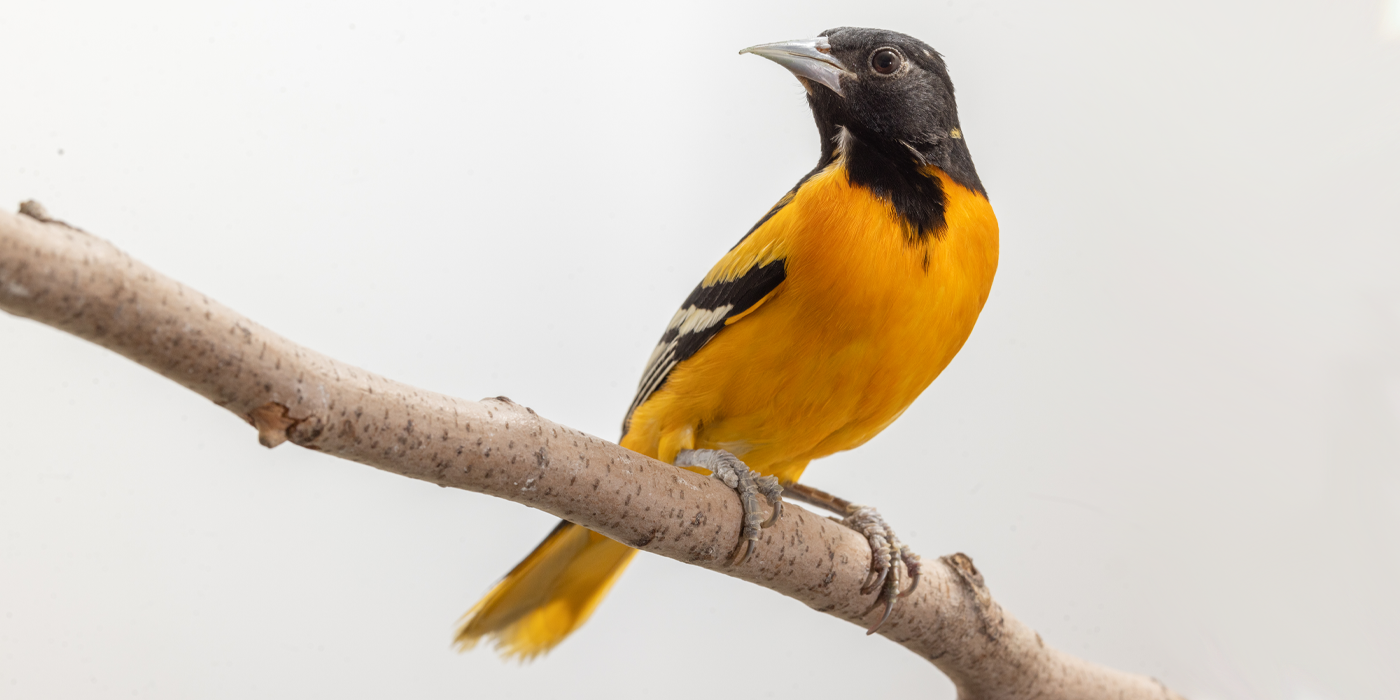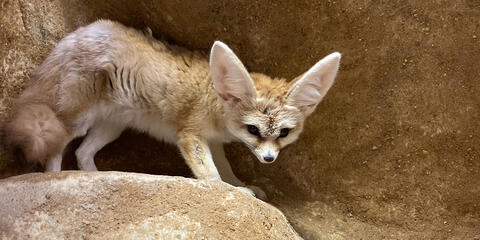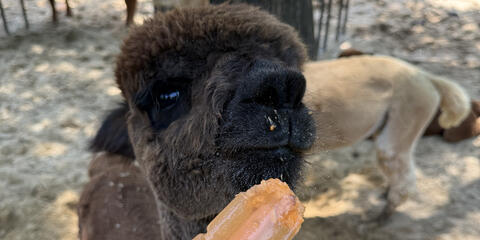Physical Description
Males and females have different feather coloration. Males can be identified by their black head and back, and a bright, boldly colored orange breast and underparts. They also have black wings with orange bars and white trim. Females are less boldly colored, with olive-brown to orange coloration, and brown wings with white wing bars. Juveniles tend to look like females; males don't develop their full coloring until the fall of their second year.
Size
Baltimore orioles are about 6.5-8 inches (17-22 centimeters) long.
Native Habitat
Open woodlands, orchards, and in urban and suburban landscapes.
A migratory bird, Baltimore orioles live in different regions across the Americas depending on the season. They range from central Alberta and Saskatchewan in Canada down to northern Colombia and Venezuela in South America.
Lifespan
Baltimore orioles live up to 11 years in the wild and 14 years in human care.
Communication
Male members of the species have a loud, flute-like whistling song. They sing this song during the breeding season to establish their territory and attract potential mates.
Food/Eating Habits
The diet of Baltimore orioles changes throughout the year. In the summer, they mostly eat insects, which are rich in the proteins needed for growth. In spring and fall, they seek nectar and ripe fruits; these sugary foods are easily converted into fat, which is necessary to give the birds energy during migration.
Sleep Habits
Baltimore orioles are active during the daytime. During their seasonal migration, they fly in the middle of the night.
Social Structure
Baltimore orioles migrate in flocks and pair up during breeding, but otherwise live alone.
Reproduction and Development
Males and females form pairs during the breeding season, starting between May and June. Nests are built by females and will hang from a branch typically found in the canopy of a hardwood tree. The nest resembles a pouch, with a small opening at the top and a deep, hanging pocket. Females lay one brood of three to seven pale grayish or bluish white eggs blotched with brown, black or lavender.
Incubation lasts 11 to 14 days, and both parents will help feed the nestlings. Chicks reach adulthood at about one year.
Conservation Efforts
Baltimore Orioles are threatened by habitat loss degradation and use of insecticides that poison both the birds and their prey. Also, many migrating songbirds like orioles are threatened by light pollution, which can disorient them at night and lead to fatal collisions with buildings and tall structures.
Help this Species
- Be a smart consumer. Choose products made with sustainable ingredients, such as Smithsonian certified Bird Friendly coffees, which support farmers striving to limit their impact on wildlife and habitat.
- Choose your pets wisely, and do your research before bringing an animal home. Exotic animals don’t always make great pets. Many require special care and live for a long time. Tropical reptiles and small mammals are often traded internationally and may be victims of the illegal pet trade. Never release animals that have been kept as pets into the wild.
- Organize or attend a stream, river, lake or other waterway cleanup in your area to preserve aquatic habitats for local species.
- Conservation starts with you! Join a citizen science project, such as FrogWatch or Neighborhood Nestwatch, where you can help collect valuable data for scientists. Encourage your friends and family to get involved too.
- Plant native flowers in your garden to help feed resident and migrating pollinators. You'll make your lawn beautiful and help wildlife at the same time!



